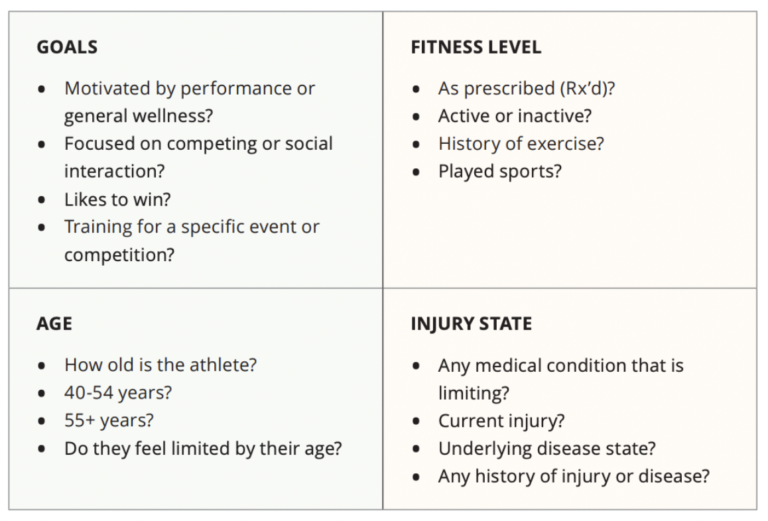Recently, readers of the Professional Coach have asked us questions about scaling and coaching older athletes, so we wanted to share a simple framework you might consider when classifying, assessing, and coaching these athletes in your gym.
As a CrossFit trainer and/or athlete, you understand the quality of life is significantly better for those who stay fit and active throughout their lives. The beauty of CrossFit’s principle of relative intensity is that it allows workouts to be scaled according to individual tolerance levels, making the program not just accessible, but inclusive to everyone, regardless of age.
In CrossFit, the term “aging athletes” generally refers to those over 40 when physical changes become more noticeable. However, it’s important to remember these athletes are not fundamentally different from younger adults. When coaching aging athletes, it’s crucial to avoid any terminology that suggests limitations. Instead, focus on their potential and the unique challenges they may face.
Although sometimes challenging because aging looks so different for everyone, training aging athletes can be manageable by understanding the key variables that influence their progress: goals, age, fitness level, and injury state. These four variables make up the masters quadrant.
THE MASTERS QUADRANT

Aging Athlete Archetypes
By assessing the interaction of these four key variables, we can define an archetype for each athlete. Thinking of our athletes as archetypes gives us a simple and consistent way to categorize them. Each archetype has specific needs that require us to adapt the training program and coaching style to maximize effectiveness. Goals and age provide important information regarding the optimal coaching interaction, whereas fitness level and injury state provide important information on how the program should be scaled. Thinking about archetypes is particularly useful if you’re a newer trainer and are unsure where to start when coaching an aging athlete.

These 16 archetypes can then be divided into four main groups: early performance, late performance, early wellness, and late wellness. Within each group, the specific variations are around fitness and injury state.
KEY PRINCIPLES FOR COACHING
The priorities in the Masters Quadrant are based on the following fundamental principles:
- Resolving injury for an injured athlete or maximizing functionality for a diseased athlete takes priority over anything else. Performance goals should be put on hold until the athlete is uninjured. It should be evident that competition places an injured athlete at considerable risk.
- Late masters should have loads reduced and, in some cases, movements modified. The scaling for 55+ Masters in the CrossFit Open is a good starting point.
- A deconditioned older athlete should be scaled more conservatively and introduced to the program more gradually than a younger, similarly deconditioned athlete.
- Wellness athletes need a broad stimulus to achieve a broad fitness adaptation, considering the goal is increased work capacity across broad time and modal domains. It is a mistake to train a wellness athlete like a competitive athlete.
- Programming for performance athletes should be biased toward the skills most commonly tested in competition — i.e., the stimulus needs to be narrower and targeted. If training for a specific event or sport, the program should be modified to cater to the specific known demands.
It is essential to understand that archetypes are not rigid. Over time, athletes may change quadrants, and you’ll need to adapt accordingly. Athletes will move from early to late age categories, goal orientation may change back and forth, injuries and illness can occur and be resolved, and the athlete will move from unfit to fit with training. Also, a break in training can result in a fit athlete regressing to a deconditioned state. In this regard, the Masters Quadrant guides you in the right direction when training a client for the first time or when progress stalls. Whenever there is a change in situational factors, the Masters Quadrant can be used to reassess where an athlete is and adjust the program accordingly. By making these reassessments and adjustments, you are enabling an athlete to continue training regardless of changes that occur with aging.
Review or take our “Coaching the Aging Athlete” course to learn more about the key considerations, risk factors, and coaching priorities for each of the four key variables.
How to Classify, Assess, and Coach Aging CrossFit Athletes